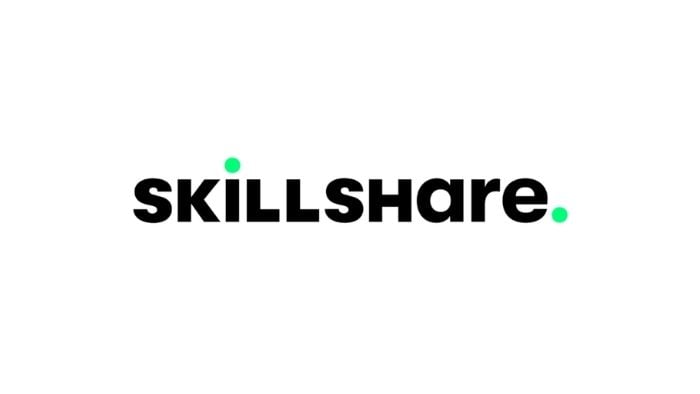- What Are Online Course Platforms?
- What Are the Best Online Course Platforms?
- What Are the Best Online Learning Platforms?
- How Do I Create and Sell Online Courses?
- How Much Money Can I Make Selling Online Courses?
- What Are The Most Popular Online Courses?
- What Are The Best Online Course Platforms? Our Key Takeaways
The Best Online Course Platforms of 2025

Table of Contents
- What Are Online Course Platforms?
- What Are the Best Online Course Platforms?
- What Are the Best Online Learning Platforms?
- How Do I Create and Sell Online Courses?
- How Much Money Can I Make Selling Online Courses?
- What Are The Most Popular Online Courses?
- What Are The Best Online Course Platforms? Our Key Takeaways
Everybody knows that the future of education is online.
In the wake of the pandemic, the market for online education has grown to $115 billion between 2017 to 2022. If anything, this proves that shifting education online is an acceptable–if not preferred–alternative to face-to-face instruction.
However, the success of online education is reliant on finding the best online training platform. The efficacy of training or education is as dependent on the teacher as it is on the online courses platform’s ability to deliver lessons clearly and to engage students effectively.
Whether you’re a course creator or taker, below are the best online course platforms you can use to successfully create and sell online courses. This list compiles the best selection of online courses platform available to users today and includes paid as well as free online course platforms.
Inside, you’ll find our in-depth reviews on the following Online Course Platforms:
We’ve also added reviews on our top Online Learning Platforms:
What Are Online Course Platforms?
As a type of Learning Management System (LMS), online course platforms give users access to educational materials from their computers or mobile devices. Most online courses allow their students to progress at their own pace before taking exercises and exams to complete the course.
To compensate for the lack of human touch, good online courses also provide an immersive learning experience through the use of text, videos, PDFs, audio, and others. However, not all instructors present their courses this way as the approach depends on a case-to-case basis.
What Are the Best Online Course Platforms?
A really good online course platform allows you to present materials dynamically. They also give you a chance to set up your courses on a site where people can learn more about them before signing up.
Finally, these platforms give you options on how to receive payment from course takers to help you create a self-sustaining stream of income. We compare online course platforms across a stringent set of factors that determine usability and efficacy for both creators and students.
That said below are online course platforms and course creation platforms that fit the description above to a tee.
1. Crevio
Best All-In-One Platform ($29/month)

If you’re looking for an all-in-one platform to create, sell, and market your courses effortlessly, then Crevio is the perfect solution for you. Crevio is designed to be a cost-effective and flexible alternative to platforms like Thinkific, offering powerful tools for course creation, sales, and student management. You can easily set up your own online store and sell your digital products (including courses) with 0% transaction fees, straight from your ‘link-in-bio’ store.
What Users Are Saying About Crevio
“I switched to Crevio from another platform, and I couldn’t be happier! The pricing is unbeatable, and the flexibility it offers makes it perfect for creators like me. The setup was quick, and I love the ability to sell multiple types of products.” – Sarah M. (Verified User)
“Crevio makes it so easy to launch and manage my courses. I especially love that I can bundle my digital products together and market them as one offering. It’s the best value platform for creators out there!” – James T. (Verified User)
Key Features
| Features | Availability | Details |
|---|---|---|
| User-friendly course builder | ✔ | Easily create and organize course content with an intuitive drag-and-drop editor. |
| Monetization and marketing tools | ✔ | Sell your courses with promotions, discount codes, and bundled product options. |
| Multimedia content support | ✔ | Add videos, PDFs, text, images, and external resources to enrich your courses. |
| Student management | ✔ | Track student progress, manage enrollments, and communicate with students. |
| Analytics and reporting | ✔ | Get insights into sales, student engagement, and performance metrics. |
| Assessments and quizzes | ✔ | Create interactive quizzes and assessments to test student knowledge. |
| Certificates & credentials | ✔ | Issue custom certificates upon course completion. |
| Third-party integrations | ✔ | Connect with email marketing tools and automation tools like Zapier. |
| Payment processing | ✔ | Accept payments through Stripe and other secure payment gateways. |
Crevio Pricing
Crevio offers simple and transparent pricing with 0% transaction fees on all plans. Free trial available – No credit card required!
-
Basic – $29/month (~$0.95/day)
- 5 published products
- Mobile-optimized ‘Link-In-Bio’ store
- 1 admin seat
-
Growth – $89/month (~$2.92/day)
- Unlimited products
- Unlimited admin seats
- Priority creator support
- Custom domain
- Remove Crevio branding

2. Thinkific

Best Course Platform ($39/month)

If you want a one-stop shop where you can set up and market your course to an audience, then Thinkific is for you. Thinkific is one of the best course creation platforms that offer a wide variety of templates and tools to help you create professional-looking courses. Plus, they make it easy to sell your courses directly through their platform, or you can use Thinkifc to power your website where you can promote your own courses and sell them with your preferred pricing. They also provide plenty of support if you need it.
What users are saying about Thinkific
“I recently transitioned from LifterLMS to Thinkific for my business. It’s great – I wish I have switched over a year ago! The ease of building courses is the best part. I had to transfer all my courses from old platform and I was nervous that this would take lots of time, but it didn’t! The course-building platform is intuitive, thank goodness.” – Dustin Y. (G2 Reviews)
“I have been using the Thinkific for over two years, and I have found it very easy to use and very adaptable. Building a course has been effortless, even for a non-techy person like myself. Basically, if you have great content, you can create a great course.” – Gregory D. (G2 Reviews)
Key features
| Features | Availability | Details |
|---|---|---|
| User-friendly course builder |
✔ |
Provides an intuitive course builder that allows you to create and organize your course content. |
| Monetization and marketing tools |
✔ |
Supports multiple ways to sell and market your courses, including promotions, discounts, and bundled courses. |
| Multimedia content support |
✔ |
Supports various types of content, such as text, images, videos, and PDFs. |
| Student management |
✔ |
Manages and tracks student progress, enrollment, and communication. |
| Analytics and reporting |
✔ |
Offers insights into course performance, student engagement, and revenue data. |
| Assessment and quiz tools |
✔ |
Allows users to create quizzes and assessments to evaluate student learning. |
| Certificate & credentials | ✔ | Users can issue certificates upon course completion, and these certificates can be customized. |
| Third-party integrations | ✔ | Integrates with various third-party tools, such as email marketing services, CRMs, and Zapier. |
| Payment processing | ✔ | Supports secure payment processing through Stripe, PayPal, and other payment gateways. |
Thinkific Pricing
Thinkific has three paid plans starting at $49/month. You can also pay annually to get a significant discount. The basic plan includes unlimited courses, custom domains, and email integration, among others.
Higher plans starting at $99/month give you access to additional admin accounts, private and hidden courses, memberships and bundles, and more.
Also check out: Thinkific vs Teachable: Which Is Right for You?

3. Learnworlds

Best Online Learning Platform for Video Creators ($29/month)

Learnworlds is a solid #2 on our list and is one of the few online course builders that allow you to create engaging videos to help facilitate learning. The area where Learnworlds really stands out is a wide range of interactivity features, making it one of the best online education platforms. Among its many functionalities, you can also add transcripts and interactions in the videos. This way, you make them easier to understand for hearing-impaired students and those who have short attention spans.
While the platform is not as easy to use as other online course software, Learnworlds might be the right choice for you, especially if you want to fully monetize your course-building efforts by building a website to promote and sell your courses as well.
Key features
| Features | Availability | Details |
|---|---|---|
| User-friendly course builder |
✔ |
Provides an easy-to-use course builder, enabling you to create and organize course content effectively. |
| Monetization and marketing tools |
✔ |
Supports various methods for selling and marketing courses, including promotions, discounts, and bundled courses. |
| Multimedia content support |
✔ |
Supports different content types, such as text, images, videos, and interactive elements. |
| Student management |
✔ |
Offers tools that help manage students, track their progress, and enrollment, and communicate with them. |
| Analytics and reporting |
✔ |
Offers insights into course performance, student engagement, and revenue data. |
| Assessment and quiz tools |
✔ |
Allows users to create quizzes and assessments to evaluate student learning. |
| Certificate & credentials | ✔ | Users can issue customizable completion certificates to your students. |
| Third-party integrations | ✔ | Integrates with various third-party tools, including email marketing services, CRMs, and Zapier. |
| Payment processing | ✔ | Supports secure payment processing through Stripe, PayPal, and other payment gateways. |
Learnworlds Pricing
Learnworlds has three paid tiers starting with the Starter Plan at $29/month.
As an online course software, it has everything you need to set up your e-learning business (unlimited courses, built-in community, coupons). On the downside, it takes $5 off every course sale and has only four payment gateways.
With higher plans starting at $99/month, you can access premium features such as subscriptions and memberships, course certificates, live classes via Zoom, and others.
You can save up to 20% on a yearly subscription on all plans.
Get a free 30-day trial of Learnworlds with our link below and start building your interactive online course.

4. Teachable

Best Online Course Platform for Beginners (from $29/month)

With over 100,000 users who have made over $50 million from selling courses, you can’t go wrong with Teachable.
Part of its success is offering users everything they need to establish a successful online and e-learning business with the platform. Top online course platforms make an effort to simplify features. The goal is to make sure that online course platforms free up creators’ time to actually focus on the quality of content that they’re producing. That said, the best online course builder must be built to be easy to use and straightforward.
Key features
| Features | Availability | Details |
|---|---|---|
| User-friendly course builder |
✔ |
Provides an intuitive course builder, making it easy to create and organize course content. |
| Monetization and marketing tools |
✔ |
Supports various methods for selling and marketing courses, including promotions, discounts, and bundled courses. |
| Multimedia content support |
✔ |
Supports different content types, such as text, images, videos, and PDFs. |
| Student management |
✔ |
Offers tools that help manage students, track their progress, and enrollment, and communicate with them. |
| Analytics and reporting |
✔ |
Offers insights into course performance, student engagement, and revenue data. |
| Assessment and quiz tools |
✔ |
Allows users to create quizzes and assessments to evaluate student learning. |
| Certificate & credentials | ✔ | Users can issue customizable completion certificates to your students. |
| Third-party integrations | ✔ | Integrates with various third-party tools, like email marketing services, CRMs, and Zapier. |
| Payment processing | ✔ | Supports secure payment processing through Stripe, PayPal, and other payment gateways. |
Teachable Pricing
Teachable has three paid plans starting with the Basic plan at $39/month. It has the same features as the other two plans. However, it takes $5 off every course sale and has lower admin-level users.
Also, features like affiliate marketing, advanced reports, and certificates are available starting with the Pro plan ($119/month)
All plans offer unlimited videos, courses, and hosting. Also, you can save up to 20% for an annual subscription on all plans.

5. Podia

The Perfect Online Teaching Platform for Non-Techies (from $39/month)

Some people have set up an online course but are unhappy with their current platform because of how complicated it can be to use.
Thanks to Podia your search for the best free online course builder for people who aren’t very technical just got easier. Podia’s online course builder lets you migrate all your course materials for free without the technical know-how and start fresh.
More importantly, you can enjoy advanced features that will help maximize your sales and conversions such as email marketing and messaging integrations. This makes it really easy to see why it’s considered to be one of the best online course creation platforms.
Key features
| Features | Availability | Details |
|---|---|---|
| User-friendly course builder |
✔ |
Provides an intuitive course builder, making it easy to create and organize course content. |
| Monetization and marketing tools |
✔ |
Supports various methods for selling and marketing courses, including promotions, discounts, and bundled courses. |
| Multimedia content support |
✔ |
Supports different content types, such as text, images, videos, and PDFs. |
| Student management |
✔ |
Offers tools that help manage students, track their progress, and enrollment, and communicate with them. |
| Analytics and reporting |
✔ |
Offers insights into course performance, student engagement, and revenue data. |
| Assessment and quiz tools |
✔ |
Provides basic quiz functionality, allowing you to create quizzes for student evaluation. |
| Certificate & credentials | ✘ | Does not have a built-in feature for issuing certificates. However, you can create your certificates and distribute them manually or through third-party integrations |
| Third-party integrations | ✔ | Integrates with various third-party tools, like email marketing services, CRMs, and Zapier. |
| Payment processing | ✔ | Supports secure payment processing through Stripe and PayPal. |
Podia Pricing
Podia keeps it simple by offering only two plans: Mover ($39/month) and Shaker ($88/month). Both let you set up your courses with zero transaction feeds on your website hosted by the platform.
With Shaker, however, you get to enjoy premium features like affiliate marketing, blog, memberships, and others.
You can save up to 17% if you pay yearly instead of monthly.

6. Learndash

Best LMS Plugin for WordPress (from $16.50/month)

If you use WordPress or know your way around creating websites using the CMS, the best course platform that you can use would be Learndash.
Learndash gives you this opportunity to set up your online business using the full features of an LMS, making it one of the best learning platforms and online course hosting platforms that you can use.
Key features
| Features | Availability | Details |
|---|---|---|
| User-friendly course builder |
✔ |
Provides a drag-and-drop course builder, making it easy to create and organize course content. |
| Monetization and marketing tools |
✔ |
Supports various methods for selling and marketing courses, such as one-time purchases, subscriptions, and memberships. |
| Multimedia content support |
✔ |
Supports different content types, including text, images, videos, and other media files. |
| Student management |
✔ |
Offers tools that help manage students, track their progress, and enrollment, and communicate with them. |
| Analytics and reporting |
✔ |
Offers insights into course performance, student engagement, and revenue data. |
| Assessment and quiz tools |
✔ |
Provides basic quiz functionality, allowing you to create quizzes for student evaluation. |
| Certificate & credentials | ✔ | Lets users issue customizable completion certificates to your students based on their achievements. |
| Third-party integrations | ✔ | Integrates with various third-party tools, like email marketing services, CRMs, e-commerce plugins, and other WordPress plugins. |
| Payment processing | ✔ | Supports secure payment processing through popular e-commerce plugins, such as WooCommerce and Easy Digital Downloads, which in turn support various payment gateways like Stripe, PayPal, and others. |
LearnDash Pricing
LearnDash offers three paid plans starting at $199/year for the Basic plan.
Similar to many online course hosting platforms, all plans have the same features (unlimited courses and users, 1-year support, drip-feed lessons, etc.). The difference is the number of sites that you can use the license on. The Basic plan only allows for a single site while the other plans (Plus at $229/year and Pro at $369/year) let you use it on 10-25 sites. Also, the higher plans give you access to a dashboard and live activity reporting.

7. Systeme

Best Comprehensive Solution for Startups (from $27/month)

As far as all-in-one solutions go, Systeme.io is perfect for online businesses looking to consolidate their solutions into one, easy-to-use platform. It’s the ideal option for small business owners, bloggers, marketers, and online entrepreneurs just starting out. Systeme easily allows you to set up the content of courses, design the enrollment landing page, and manage course participants.
While it was specifically designed to make the creation of paid courses easy and simple, it also allows you to set up a funnel that provides access to free resources.
Key Features
| Features | Availability | Details |
|---|---|---|
| User-friendly course builder |
✔ |
Provides an intuitive course builder, allowing you to create and organize course content efficiently. |
| Monetization and marketing tools |
✔ |
Supports various methods for selling and marketing courses, such as one-time purchases, subscriptions, and memberships. |
| Multimedia content support |
✔ |
Supports different content types, including text, images, videos, and audio files. |
| Student management |
✔ |
Offers tools that help manage students, track their progress, enrollment, and communicate with them. |
| Analytics and reporting |
✔ |
Offers insights into course performance, student engagement, and revenue data. |
| Assessment and quiz tools |
✔ |
Provides basic quiz functionality, allowing you to create quizzes for student evaluation. |
| Certificate & credentials | ✘ | Does not have a built-in feature for issuing certificates. However, you can create your certificates and distribute them manually or through third-party integrations. |
| Third-party integrations | ✔ | Integrates with various third-party tools, such as email marketing services, CRMs, and payment gateways. |
| Payment processing | ✔ | Supports secure payment processing through Stripe and PayPal. |
Systeme Pricing
Systeme starts with a basic free plan followed by three tiers of paid monthly options, beginning at $27.
All plans include unlimited emailing, unlimited storage space, unlimited students, no transaction fees, affiliate programs, and reliable online support. However, the highest tiers offer unlimited access to additional premium features as well. Signing up for an annual subscription lets you save 30% across all plans.

8. Kajabi

Best All-Inclusive Learning Platform for Professionals (from $119/month)

While most online learning platforms require you to integrate with other tools to simplify your process, Kajabi takes it to a whole new level.
It takes the best features from these tools and combines them in a single dashboard. This way, you can manage your online business in peace without the troublesome integrations.
Key features
| Features | Availability | Details |
|---|---|---|
| User-friendly course builder |
✔ |
Provides an intuitive course builder, allowing you to create and organize course content efficiently. |
| Monetization and marketing tools |
✔ |
Supports various methods for selling and marketing courses, such as one-time purchases, subscriptions, and memberships. |
| Multimedia content support |
✔ |
Supports different content types, including text, images, videos, and audio files. |
| Student management |
✔ |
Offers tools that help manage students, track their progress, enrollment, and communicate with them. |
| Analytics and reporting |
✔ |
Offers insights into course performance, student engagement, and revenue data. |
| Assessment and quiz tools |
✔ |
Provides basic quiz functionality, allowing you to create quizzes for student evaluation. |
| Certificate & credentials | ✘ | Does not have a built-in feature for issuing certificates. However, you can create your certificates and distribute them manually or through third-party integrations. |
| Third-party integrations | ✔ | Integrates with various third-party tools, such as email marketing services, CRMs, and other marketing and sales tools. |
| Payment processing | ✔ | Supports secure payment processing through Stripe, PayPal, and other payment gateways. |
Kajabi Pricing
Since Kajabi strives to be more than just an online learning platform, it makes it more expensive than the rest of the solutions in this list. Starting at $149/month, you can create at least three products and pipelines with over 1,000 members and 10,000 contacts.
Higher plans ($199/month onwards) allow the use of its affiliate marketing and advanced automation features. From here, you can also remove the Kajabi branding from all your products.
You can save up to 30% if you sign up for their annual subscriptions. All plans have a 14-day free trial to give you time to toy with it first.

9. Ruzuku
The Easiest Way to Deliver Online Courses (from $74.75/month)

Given the unprecedented times, some people lack the know-how to move all their learning tools online.
However, Ruzuku simplifies setting up and launching your online courses so you can focus on the bottom line.
Key features
| Features | Availability | Details |
|---|---|---|
| User-friendly course builder |
✔ |
Provides an intuitive course builder, allowing you to create and organize course content efficiently. |
| Monetization and marketing tools |
✔ |
Supports various methods for selling and marketing courses, such as one-time purchases, subscriptions, and memberships. |
| Multimedia content support |
✔ |
Supports different content types, including text, images, videos, and audio files. |
| Student management |
✔ |
Offers tools that help manage students, track their progress, enrollment, and communicate with them. |
| Analytics and reporting |
✔ |
Offers insights into course performance, student engagement, and progress data. |
| Assessment and quiz tools |
✔ |
Allows users to create quizzes and assessments to evaluate student learning. |
| Certificate & credentials | ✘ | Does not have a built-in feature for issuing certificates. However, you can create your certificates and distribute them manually or through third-party integrations. |
| Third-party integrations | ✔ | Integrates with various third-party tools, such as email marketing services, CRMs, and payment gateways. |
| Payment processing | ✔ | Supports secure payment processing through Stripe and PayPal. |
Ruzuku Pricing
All three plans (starting with a free tier, followed by a $99/month plan with a 14-day trial) have 0% transaction fees, accept PayPal and Stripe payments, and allow discount coupons that you can offer to people.
Higher plans receive access to unlimited webinars, polls, quizzes, and a wide variety of payment plans.
To save with your subscription, sign up for their yearly plans (from $99/month to $74.75/month paid annually).
If you’re unhappy with the platform, you can request a refund within 30 days of purchase – no questions asked.

10. Academy of Mine
The Best Enterprise B2B Online Learning Platform (from $499/month)

If there’s a platform dedicated to the creation of internal training materials for organizations, the Academy of Mine is it.
Arguably the most robust among the list, it can deliver the most advanced features that meet the demands of B2B companies.
Key features
| Features | Availability | Details |
|---|---|---|
| User-friendly course builder |
✔ |
Provides an intuitive course builder, allowing you to create and organize course content efficiently. |
| Monetization and marketing tools |
✔ |
Supports various methods for selling and marketing courses, such as one-time purchases, subscriptions, and memberships. |
| Multimedia content support |
✔ |
Supports different content types, including text, images, videos, and audio files. |
| Student management |
✔ |
Offers tools that help manage students, track their progress, enrollment, and communicate with them. |
| Analytics and reporting |
✔ |
Offers insights into course performance, student engagement, and revenue data. |
| Assessment and quiz tools |
✔ |
Allows users to create quizzes and assessments to evaluate student learning. |
| Certificate & credentials | ✔ | Lets users issue customizable completion certificates to your students based on their achievements. |
| Third-party integrations | ✔ | Integrates with various third-party tools, such as email marketing services, CRMs, and payment gateways. |
| Payment processing | ✔ | Supports secure payment processing through Stripe, PayPal, and other payment gateways. |
Academy of Mine Pricing
For their starter plan, at $299/month, the Academy of Mine provides users with everything they possibly need from an online learning platform.
It has the usual features common across all platforms – unlimited courses, integrated e-commerce, advanced reporting, and others.
However, since Academy of Mine caters to B2B clients, its Group Onboarding features are the most popular.
Upon purchase, you also receive 15 hours’ worth of onboarding and training from the team. This helps acquaint you with its distinct features so you can get the best out of it.

11. WizlQ
The Perfect Online Learning System for Educators (from $25/month)

WizIQ works both as a platform for holding live classes online and as an LMS where you can sell online courses.
We highly recommend this for teachers looking to share their knowledge with people regardless of where they are.
Key features
| Features | Availability | Details |
|---|---|---|
| User-friendly course builder |
✔ |
Provides an intuitive course builder, allowing you to create and organize course content efficiently. |
| Monetization and marketing tools |
✔ |
Supports various methods for selling and marketing courses, such as one-time purchases, subscriptions, and memberships. |
| Multimedia content support |
✔ |
Supports different content types, including text, images, videos, and audio files. |
| Student management |
✔ |
Offers tools that help manage students, track their progress, enrollment, and communicate with them. |
| Analytics and reporting |
✔ |
Offers insights into course performance, student engagement, and revenue data. |
| Assessment and quiz tools |
✔ |
Allows users to create quizzes and assessments to evaluate student learning. |
| Certificate & credentials | ✔ | Lets users issue customizable completion certificates to your students based on their achievements. |
| Third-party integrations | ✔ | Integrates with various third-party tools, such as email marketing services, CRMs, and Learning Management Systems (LMS). |
| Payment processing | ✔ | Supports secure payment processing through payment gateways like PayPal, Stripe, and others. |
WizIQ Pricing
WizIQ offers Live Classroom (starting at $25/month paid annually) and its Learning Management System (contact sales for pricing).
The former is ideal for people who want to deliver live classes from their existing site through API. Under this option, there are three plans to choose from. All give you access to screen sharing, a whiteboard, the content library, and a maximum of two hours for the video, among others.
The LMS option is best suited for people looking to launch online courses.
There are two plans to choose from. Both have basic features such as integrated payment gateways, discussion forums, conditional access to content, and others.

What Are the Best Online Learning Platforms?
Just as fun as creating courses is learning new skills you can capitalize on later in life. This is true, especially in today’s world where we are experiencing a paradigm shift in how we receive an education.
Therefore, on the flip side of profiting from your knowledge, below are online learning platforms where you can gain new knowledge about your interests and passions.
1. Shaw Academy

Shaw Academy is one of the primary beneficiaries of the online course boom in 2020. But despite its surging popularity for its fine collection of courses, its reputation took a hit because of billing issues and poor customer support.
Since the Trustpilot debacle, people have been moving away from Shaw Academy to its alternatives. For your safety, we suggest you do the same.
2. Skillshare


With a healthy mix of 20,000 free and premium online classes to choose from, Skillshare is a great place to start with your online education.
Learn about practical skills you can apply in real life from industry experts to help you level up your game in the workplace and life.
With an excellent track record of courses, you can’t go wrong with at least trying Skillshare out.
3. Udemy

Arguably the most popular online learning platform on this list, Udemy is home to over 130,000 courses that range across different topics under the sun.
By signing up, expect to learn from top instructors in their respective fields in easy-to-understand courses. If you run an organization, Udemy for Business grants you access to the top exclusive learning materials that will help you get to the top.
As a low-cost online learning platform, you will have to dig deep to find diamonds in the rough with Udemy.
4. LinkedIn Learning

As the top social networking site for professionals, it only makes sense for LinkedIn to launch its own learning platform.
The result is a very concentrated but slowly growing collection of courses from specific topics. Despite its limited coverage, LinkedIn Learning is an excellent choice for people who want to acquire skills that can help them level up their game at work.
LinkedIn Learning is a great source of insightful job-related courses to help you move up the ranks.
5. Treehouse

The demand for technical and web-related skills is high nowadays.
Therefore, instead of sticking with the things you know, you may want to expand your skill sets that businesses need with the help of Treehouse.
Despite the steep price ($199/month), learning code doesn’t get any better than Treehouse.
6. Coursera

If you want to refine your existing skills or learn new ones, take courses that grant certifications as proof of completion and offer transferable credits to accredited institutions (but only if you’re currently enrolled in degree programs).
Like many of the best learning platforms, Coursera checks both boxes and then some. The platform is known as a top platform for creating online courses and is the place to find free and premium courses taught by top experts from the best universities and companies in the world.
How Do I Create and Sell Online Courses?
1. Figure out the topic of your online course
Your first step is to decide what type of course, you want to sell. Do you have expertise in something? A big part of your success leans on finding the best platform to create online courses and figuring out what kind you can share. Is there a skill or hobby that people would pay for lessons on? If so, then you’ve got the makings of a great online course! Once you’ve figured out your topic, it’s time to start thinking about different ways to create your course content. You can do this by recording videos, writing articles and blog posts about the subject matter, or even just holding live webinars. While options are ample, it’s widely believed that a series of videos are usually the most engaging form of delivery for an online course.
2. Estimate the cost of creating your online course
Before you start developing your course, it’s important to figure out how much it will cost you. There are free online learning platforms available however their features and accessibility may be limited compared to other options. Usually, the best platform for creating online courses is paid and includes other expenses. This includes the development costs (such as hiring a developer if necessary) and marketing expenses (such as advertising or website design). Be sure to include any other associated costs, such as software licenses or course materials.
Once you have an estimate for the total cost of the best online course software and other peripheral expenses, you can create a budget and make sure you have the funds to cover it. You don’t want to start developing your course only to find out that you can’t afford to finish it!
Tip: If you’re unsure about how much something will cost, ask other online course creators for advice or consult with a professional.
3. Use the right equipment
When developing your course, it’s important to not only choose the best platform for online courses, you also have to uuse the best software and equipment. This will ensure that you create a high-quality product and save time in the process. For example, if you’re recording videos for your course, then make sure you have a good camera as well as lighting and sound equipment. You don’t want to end up with grainy or distorted footage! However, you don’t need the most expensive, top-of-the-range equipment to get started.
Simultaneous to finding the best learning platforms, you have to take a look at some of the essential items to get you going:
Microphone
If you’re recording videos for your course, then make sure to invest in a good microphone. There are many different types of microphones available but here are three popular options:
- Lavalier microphones: These small mics can be clipped onto clothing or placed near the speaker’s mouth. They’re great for capturing audio that is close to the source.
- Headphones with a microphone: These headphones have built-in microphones, which makes them ideal for recording videos or audio conferences.
- USB microphones: USB mics offer the same functionality as other microphones, but with the major convenience of not requiring any additional gear to interface with your computer.
You can also consider getting additional accessories such as foam balls, shock mounts, and acoustics panels in order to improve the quality of recorded audio further. It’s particularly crucial in smaller spaces and rooms lacking soft surfaces.
Headphones
If you’re recording audio, then make sure to invest in a good pair of headphones. This will allow you to hear yourself clearly and keep track of any mistakes that may have been made during the recording process. You can consider purchasing, lately popular, noise-canceling headphones if your workspace is noisy or has an echo effect.
Screen recording program
If you’re creating video tutorials, then you’ll need a screen recording program. This will allow you to record your computer screen as you walk through the steps of whatever task you’re demonstrating. There are many different programs available, but we recommend using Loom as our go-to screen recording tool.
USB Webcam
If you’re recording videos, then a USB webcam is essential. This will allow you to record yourself and your computer screen at the same time (as well as other people if they join in onscreen).
You can also use a built-in laptop camera, but these tend to be lower quality than USB webcams.
Tip: If your webcam doesn’t have good lighting or the image is dark, try using an external light source like a lamp near the camera so that it will show up onscreen better!
Audio and video editing software
Once you’ve recorded the audio and video for your course, it’s time to edit it. This will allow you to remove any mistakes or background noise that may have occurred during recording so that your final product is as professional as possible.
If you’re interested in learning more about different available options, don’t forget to check out our posts on the best video editing tools and photo editing software.
4. Create valuable content
It’s not enough to just create an online course; you need to make sure that it provides value as well! There is a lot of competition in this space, which means you have to be one of the best online course creators to be recognized.
The best way of doing this is by using examples from your own experience or research, and then teaching them in a clear and concise manner so that students can easily understand what they’re learning. You should also include any relevant tips or advice that you’ve gathered over the years.
Ask your family and friends to test out your course content and provide feedback. This will help you ensure that your content is valuable and easy to understand.
The next step is to create a landing page for your course and drive traffic to it. You can do this by promoting your course on social media, blogging about it, or even sending out email marketing campaigns.
Finally, once you’ve generated some interest in your course, it’s time to start selling!
5. Choose the right online course platform
After you’ve spent your precious time creating standout content, it is important that you consider the best place to host online courses on. Platforms for online courses vary. There are free online training platforms, while others offer paid options that lets you create online course platforms depending on your needs.
Think about what kind of platform will best suit your marketing strategy and the needs of your students. There are many options available on the market today, however, Thinkific stands out as our #1 choice thanks to an easy-to-use interface and pricing being exactly in line with other affordable options, despite offering a much broader range of powerful features such as a built-in payment system and free Wistia video hosting. Depending on your content, you can also opt for the best eLearning platforms instead or if what you need is more straightforward, you can opt for a free course creation platform. Video course platforms are also available.
While there are paid options available, free options are also something you can consider. The best free online learning platforms offer basic features that you can quickly scale to accommodate bigger audiences and more features. This is why finding the best course hosting platform is crucial to your success.
How Much Money Can I Make Selling Online Courses?
There’s no one answer to this question since it depends on a variety of factors, such as the type of course you create, your target audience, and how popular your courses are. However, we’ve seen people earning anywhere from a few hundred dollars to several thousand dollars per month from their online courses.
It’s important to remember that you won’t become rich overnight by selling online courses, but it can be a viable source of relatively passive income once your courses are up and running.
What Are The Most Popular Online Courses?
There are many different types of online courses available, but some of the most popular ones include:
- Business and entrepreneurship courses
- Technology courses
- Creative arts courses
- Cooking and nutrition courses
- Language courses
The popularity of these subjects is likely due to the fact that they offer tangible skills or knowledge that can be applied in the real world.
What Are The Best Online Course Platforms? Our Key Takeaways
In this day and age, online teaching and learning are the way to go. Even better, each platform caters to people with different wants and needs.
Thanks to the variety of online course platforms and learning platforms available, there’s something for everyone. Based on the description for each tool above, decide which one is going to either help you create online courses effectively or gain new skills to move up the professional ladder.
If you’re in the business of creating online course products, Thinkific is the best place to start. It provides you with all the tools to set up, launch, and earn money from your courses. If you want to go beyond just courses and sell a wider array of info products, Crevio might be your top choice.
Regarding the latter, Coursera seems to be the most logical destination for finding courses to take or audit for free. There’s also an option to pay and earn credits plus certification after finishing it.
Want to Learn More?
Still not sure which platform will best meet your needs? Check out some of our more in-depth reviews and comparisons before picking your online course platform:
For this post, we conducted a rigorous evaluation process to identify the best online course platforms. Our testing methodology involved thorough research, hands-on exploration of each platform’s features, and user experience analysis. We assessed the platforms based on various criteria such as ease of use, course creation tools, pricing, integrations, and customer support. Additionally, we considered real user reviews and expert opinions to ensure a comprehensive evaluation. This meticulous approach enabled us to present the top online course platforms that consistently deliver high-quality learning experiences.
Related Products



